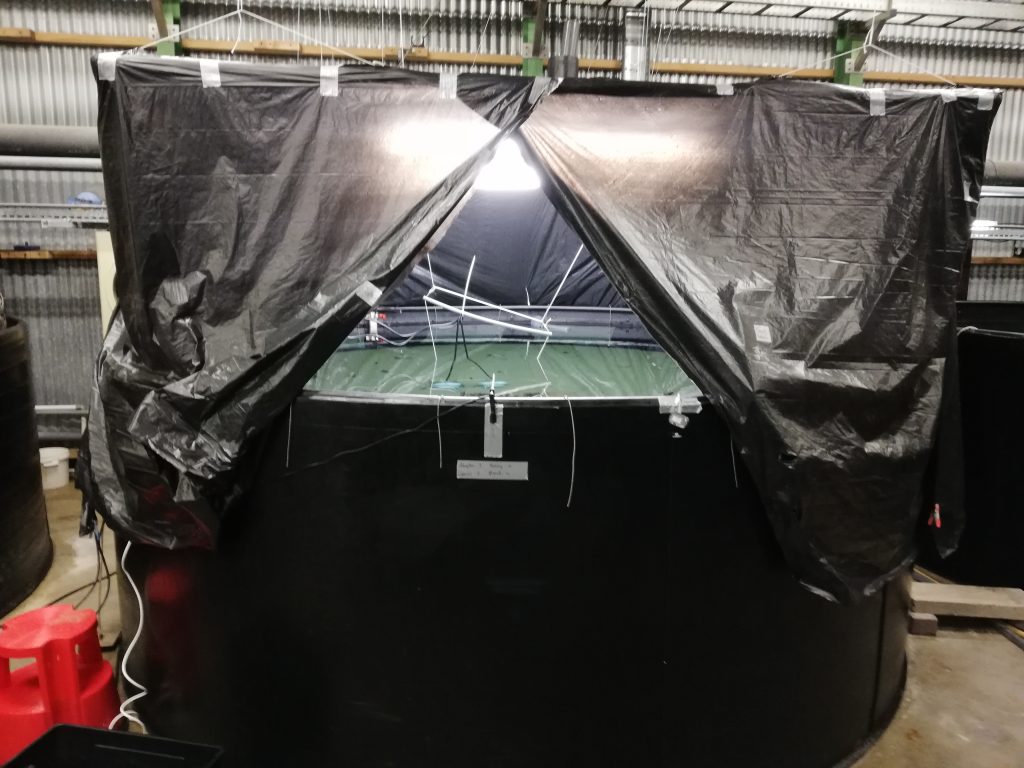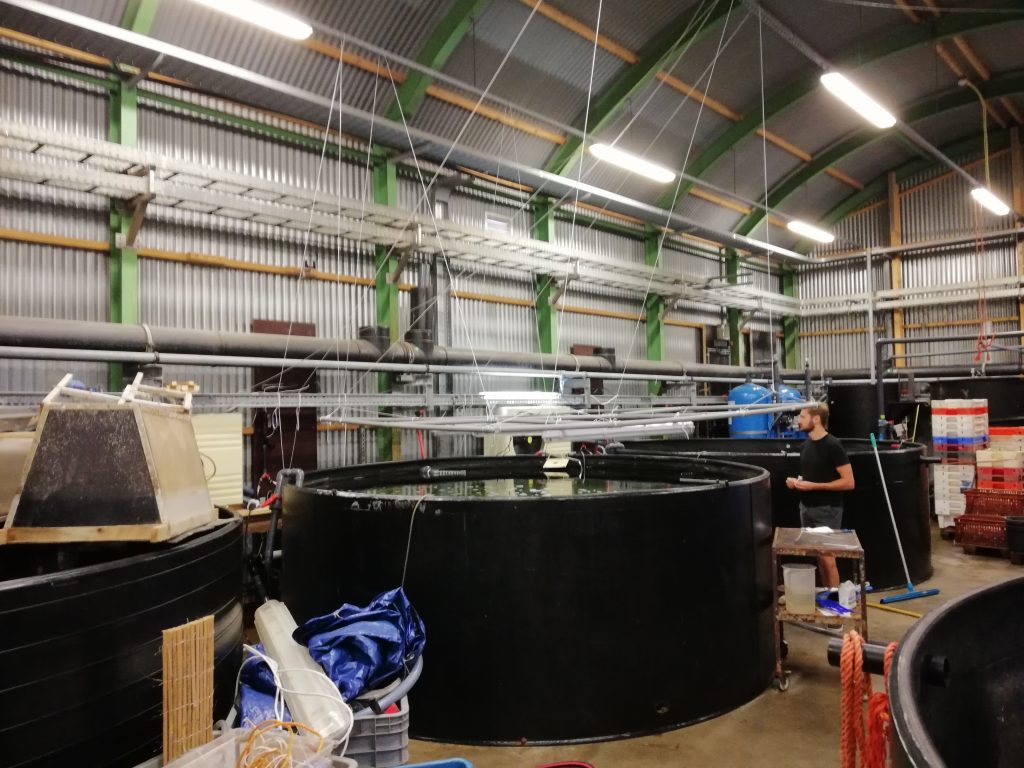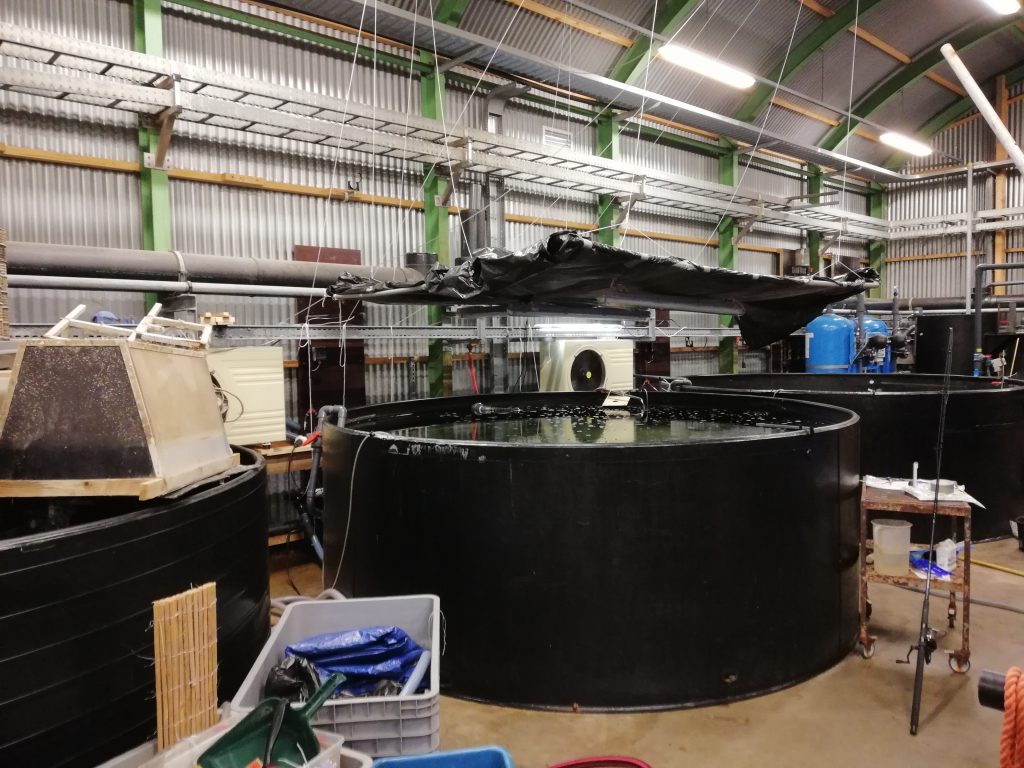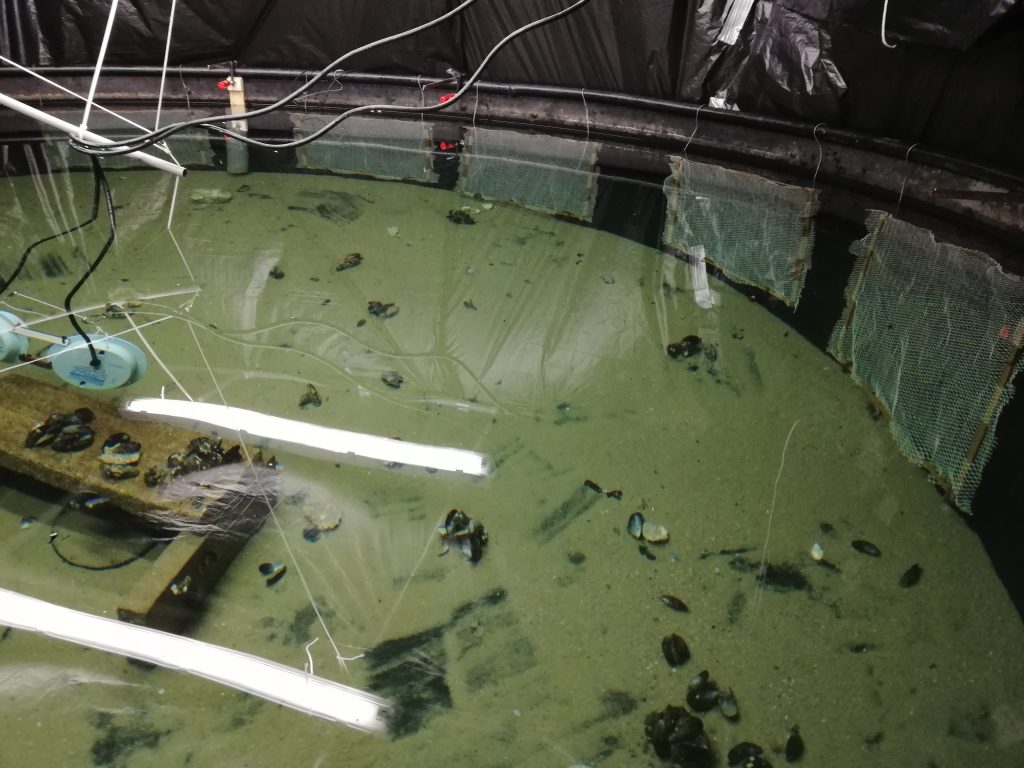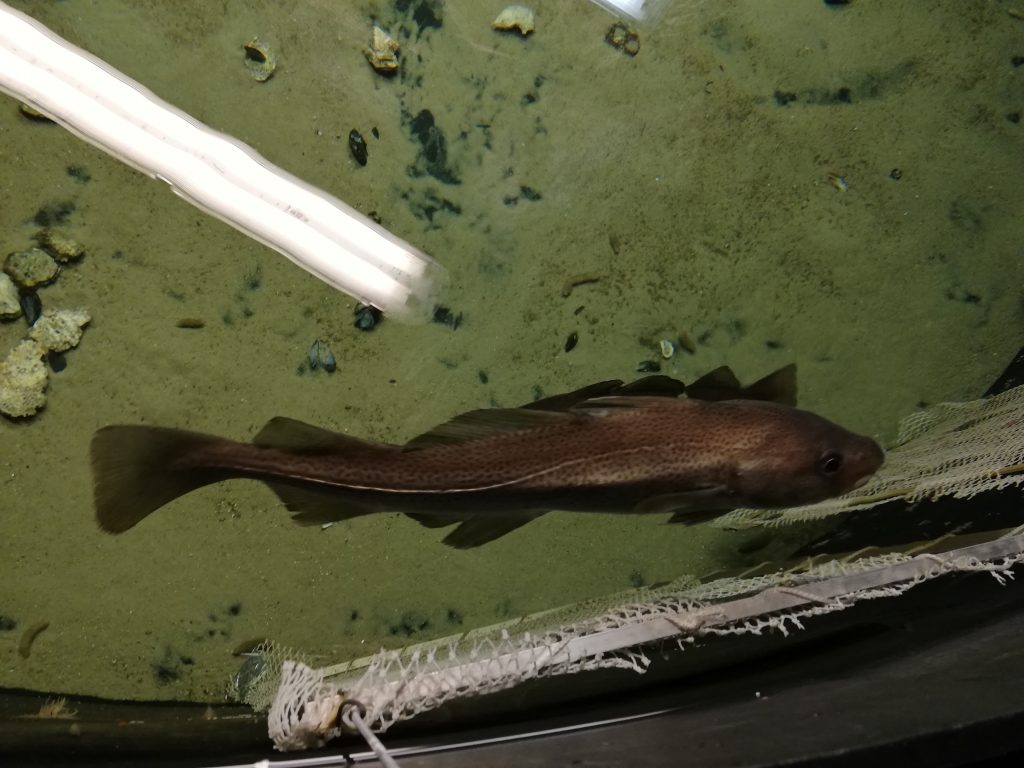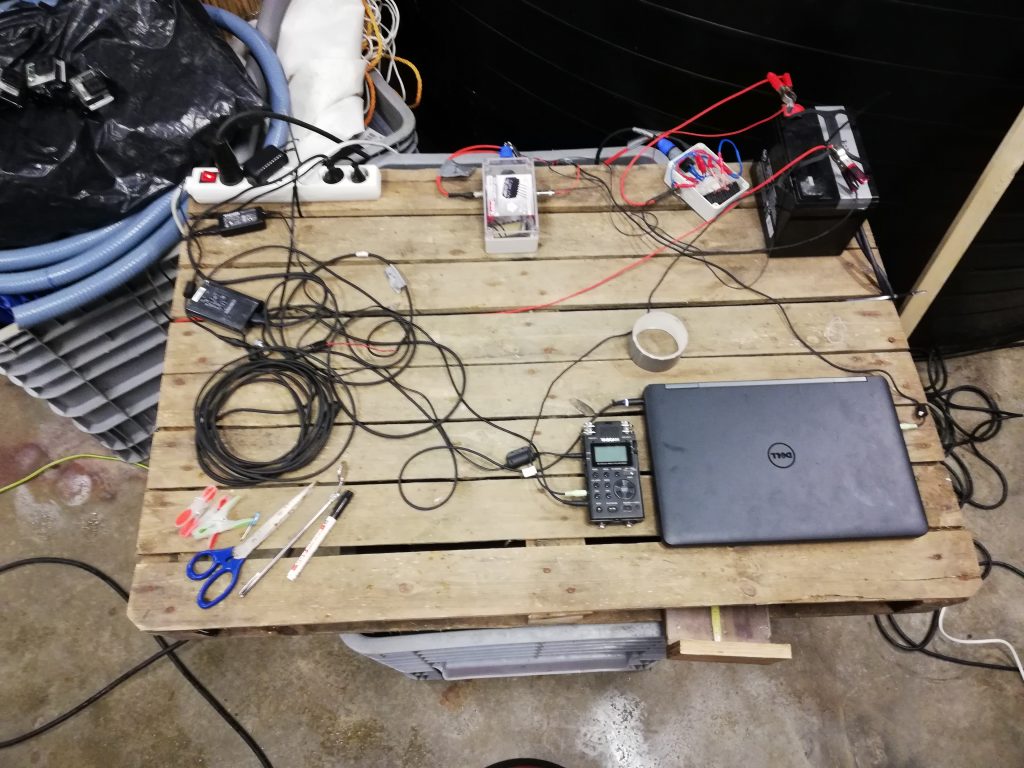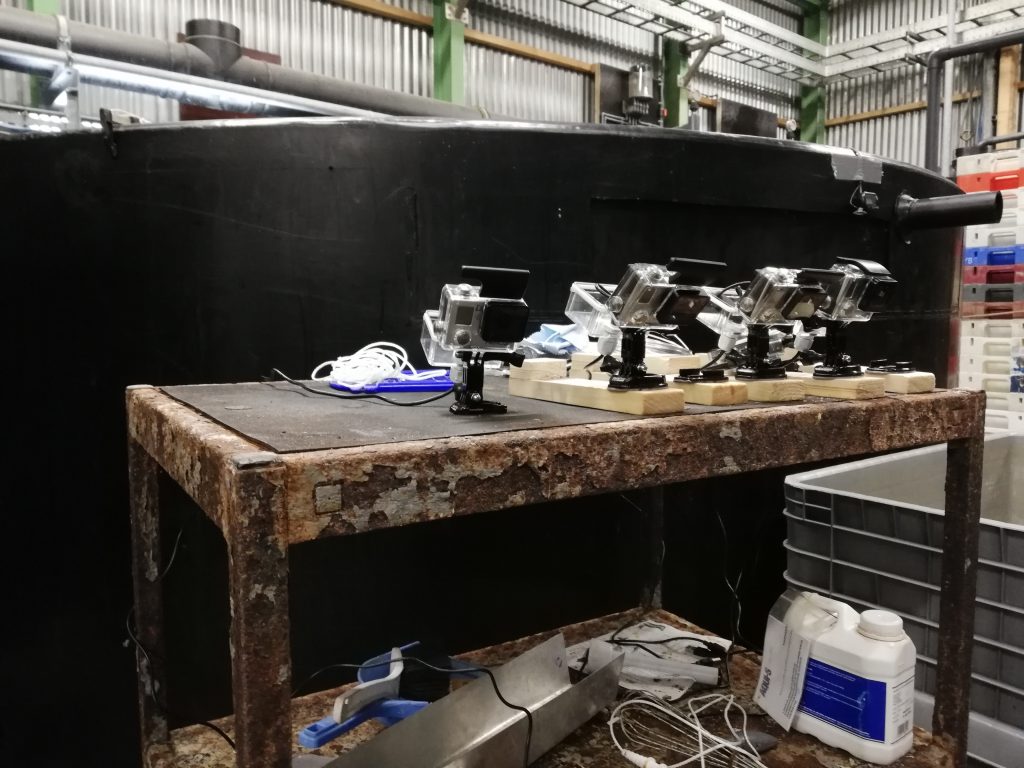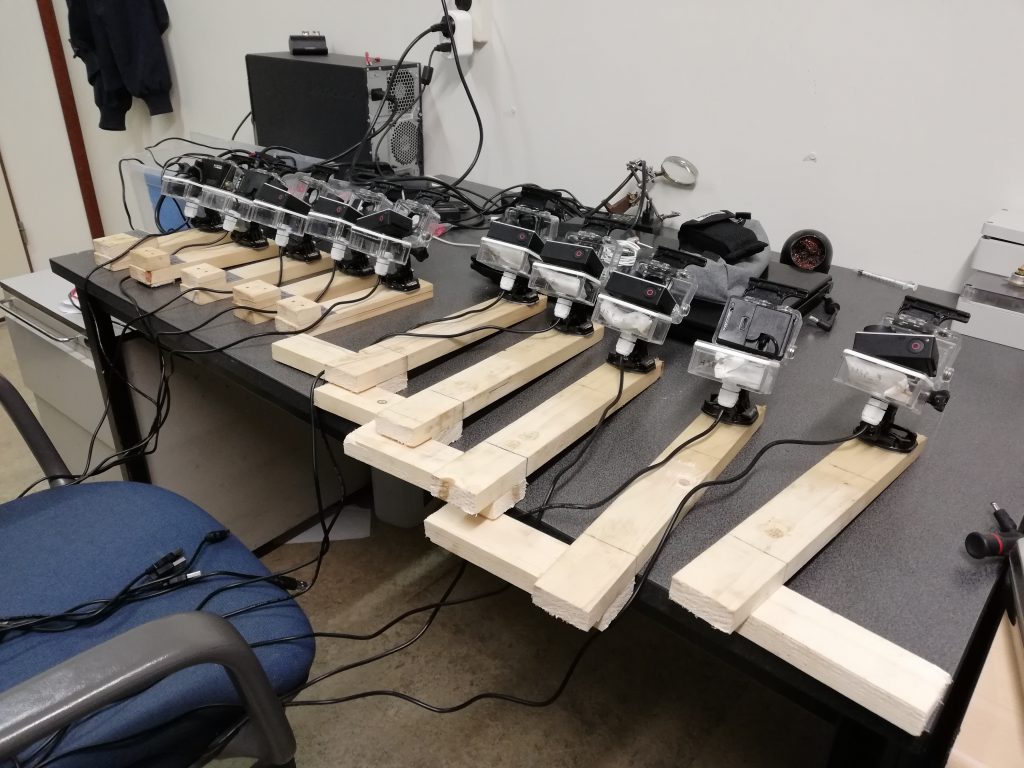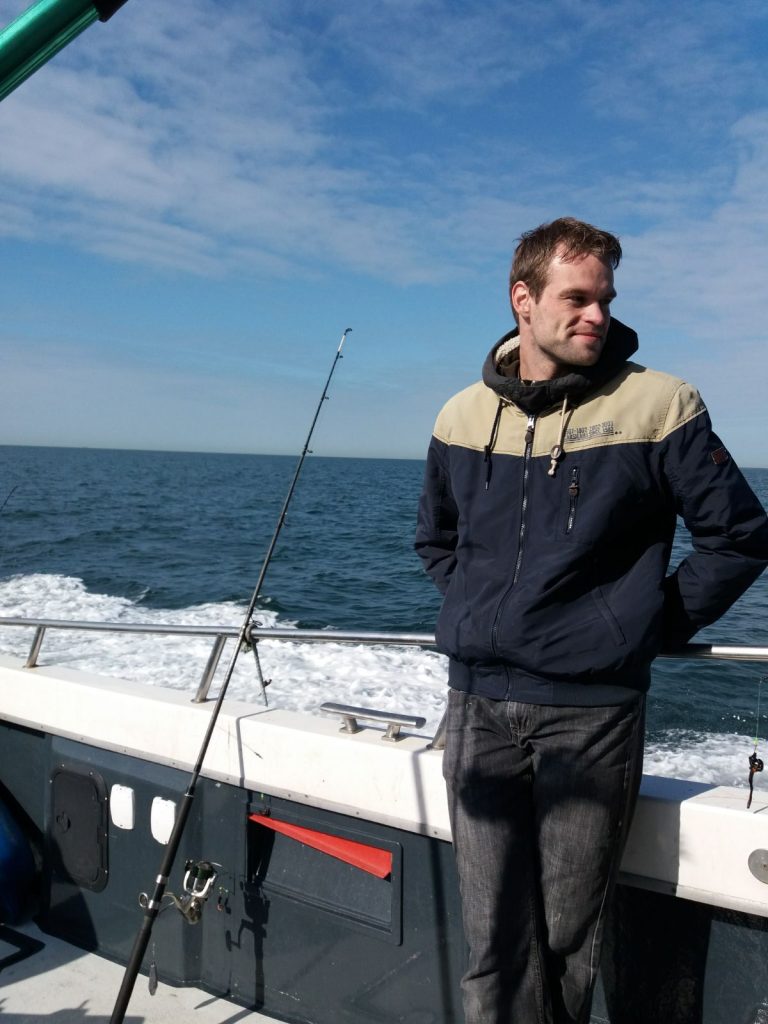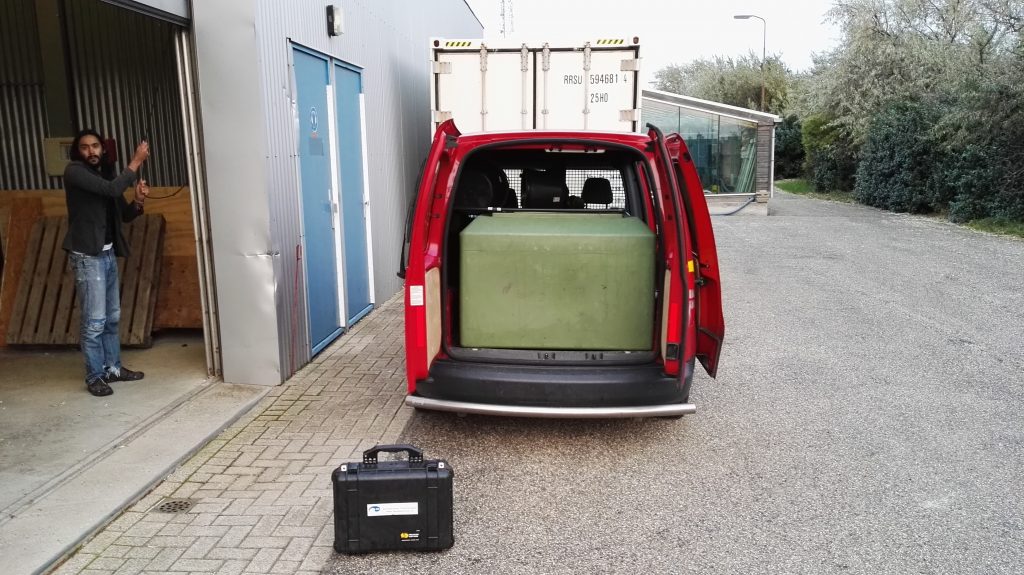We just published a new conference paper ‘Exploring effects of sound on the time budget of fishes: An experimental approach with captive cod‘ and it’s open access (PDF)! The paper is part of the PCAD4Cod project and is authored by Daniël A. Wille, Hans Slabbekoorn and myself.
There’s an increasing interest into the effects of anthropogenic sound on marine animals including fish. A variety of studies is being conducted to gain insight into these effects. Ultimately, we want to gain insight into the effects of sound on individuals’ fitness and population levels. Modeling studies show that changes in energy expenditure and intake have most potential to lead to population levels effect. So, it’s important to study the effect of sound on individuals’ time and/or energy budget.
Ideally, this is studied in the field, but it’s very challenging to track free-ranging fish in their natural environment at high resolution. For that reason, we conducted a pilot study in a basin. We videoed 3 pairs of Atlantic cod for 7 hours per day, for 6 consecutive days. We exposed them to the playback of seismic survey sound for 3 consecutive days and a silent control for another 3 consecutive days. Each morning, we introduced live crabs in the experimental basin and the cod exhibited natural foraging behaviour by scanning and lifting patches of oysters in search for the crabs.
From the daily 7 hours of video footage, we extracted 20 second clips every five minutes (see example clips below). We scored the most dominant behaviour of both fish (foraging, swimming or stationary). In this way, we got insight in the activity budgets of individual cod with and without sound exposure. This can be translated to energy budgets by determining the energy expenditure and intake in all behavioural states.
